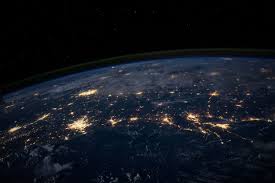By Michael Botti, Year 12
Today, April 22, is “Earth Day”, but shouldn’t every day be Earth’s day? We only have one blue planet and a delicate ecosystem in which humanity can survive and thrive. Isn’t preserving our planet worth more than just one day per year?
What if we flipped the narrative and had one day per year that we called “Pollute Day.” This would be our day to indiscriminately consume and dispose without consequence. A savvy planner would proclaim Pollute Day as February 29, also known as Leap Day, so it would only occur once every four years. Maybe we would even forget about celebrating Pollute Day since it happens so infrequently. While I am illustrating the irony of our current thinking and approach, it does draw attention to our need to reframe the problem, the solutions, and our collective mindset.
Regenerative Mindset and the Circular Economy
A regenerative mindset is a more holistic way of thinking about sustainability than the UN Sustainable Development Goals (SDG). Regenerative sustainability means to integrate inner mindsets, world views, paradigms and behavior and outer dimensions of the sustainability necessary for transformation. Instead of seeing gaps between problems and solutions, regenerative sustainability sees systems as transitory states that handle complexity and seek a state of wellbeing.
The circular economy is a system where materials never become waste and nature is regenerated. In a circular economy, products and materials are kept in circulation through processes like maintenance, reuse, refurbishment, remanufacture, recycling, and composting. One of the key principles of the circular economy is to regenerate nature. By moving from a take-make-waste linear economy to a circular economy, we support natural processes and leave more room for nature to thrive. By shifting our economy from linear to circular, we shift the focus from extraction to regeneration. Instead of continuously degrading nature, we build natural capital. If we move to a regenerative model, we begin to emulate natural systems. There is no waste in nature. When a leaf falls from a tree it feeds the forest. For billions of years, natural systems have regenerated themselves. Waste is a human invention.
Planet vs. Plastics
The theme of Earth Day 2024 is “Planet vs. Plastics.” Though plastic use soared throughout the 20th century, it has now become clear that plastics are having a detrimental impact on the environment. Now, we know that once created, plastics stay in the environment forever, pose a risk to human health, and contribute significantly to climate change.
Plastic was introduced in the 1950s, and 9.3 billion metric tons of it had been produced by 2017. In 2022, the worldwide production of plastics was 400.3 million metric tons. And most of that plastic sticks around: As of 2017, 79% of all plastic that had ever been made still sits in landfills or the natural environment, except for the small amount that has been incinerated or recycled. Plastic production is directly tied to pollution and climate change. About 4% of total greenhouse gas emissions are generated by the production, conversion, and waste management of plastics. 93% of plastics are currently produced with fossil fuels. Emissions associated with fossil-based plastics will more than double, and global plastic use is projected to triple, leading to a doubling of plastic leakage to the environment. Plastics are versatile materials, but the way we use them is incredibly wasteful. We take oil and gas from the earth to make plastic products that are often designed to be used only once, and then we throw them away. This is known as a linear take-make-waste model. Every year, millions of tons of plastic, worth billions of dollars, ends up in landfills, is burned, or leaked into the environment. According to the Ellen MacArthur Foundation, a staggering 8 million tons of plastic leaks into the ocean every year and that number is rising. If we don’t rethink its use, there will be more plastic in the ocean than fish by weight by 2050. We must rethink the way we design, use, and reuse plastics to create a circular economy for plastic.
In a new plastics economy, plastic never becomes waste or pollution. The Ellen MacArthur Foundation proposes three required actions to achieve this vision and create a circular economy for plastic:
- Eliminate all problematic and unnecessary plastic items.
- Innovate to ensure that the plastics we do need are reusable, recyclable, or compostable.
- Circulate all the plastic items we use to keep them in the economy and out of the environment.
By adopting one of the key principles of the circular economy – regenerating nature – we can shift our priorities. No longer should our focus be simply on doing less harm to the environment, but on how we can actively improve it. If the economy follows circular principles, the more we do, the greater the benefits. Every day could be Earth’s day.



